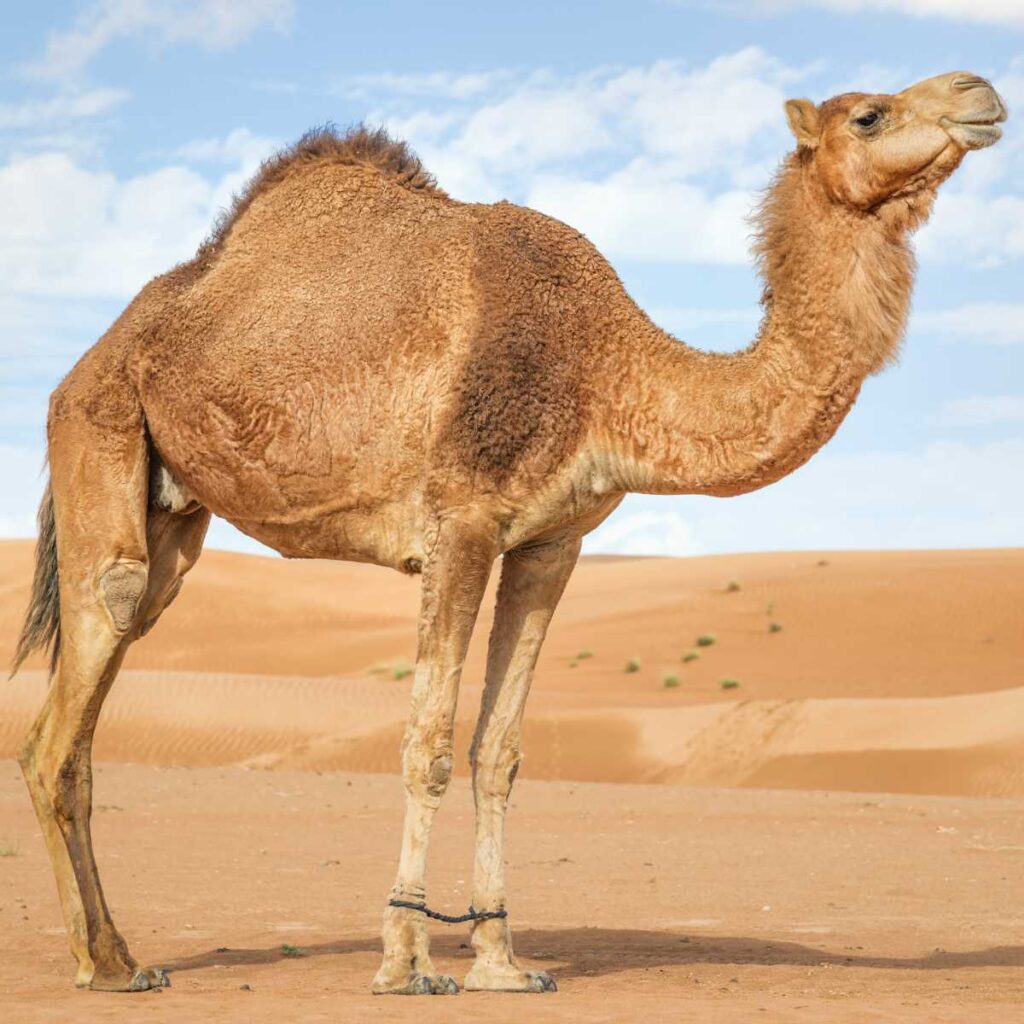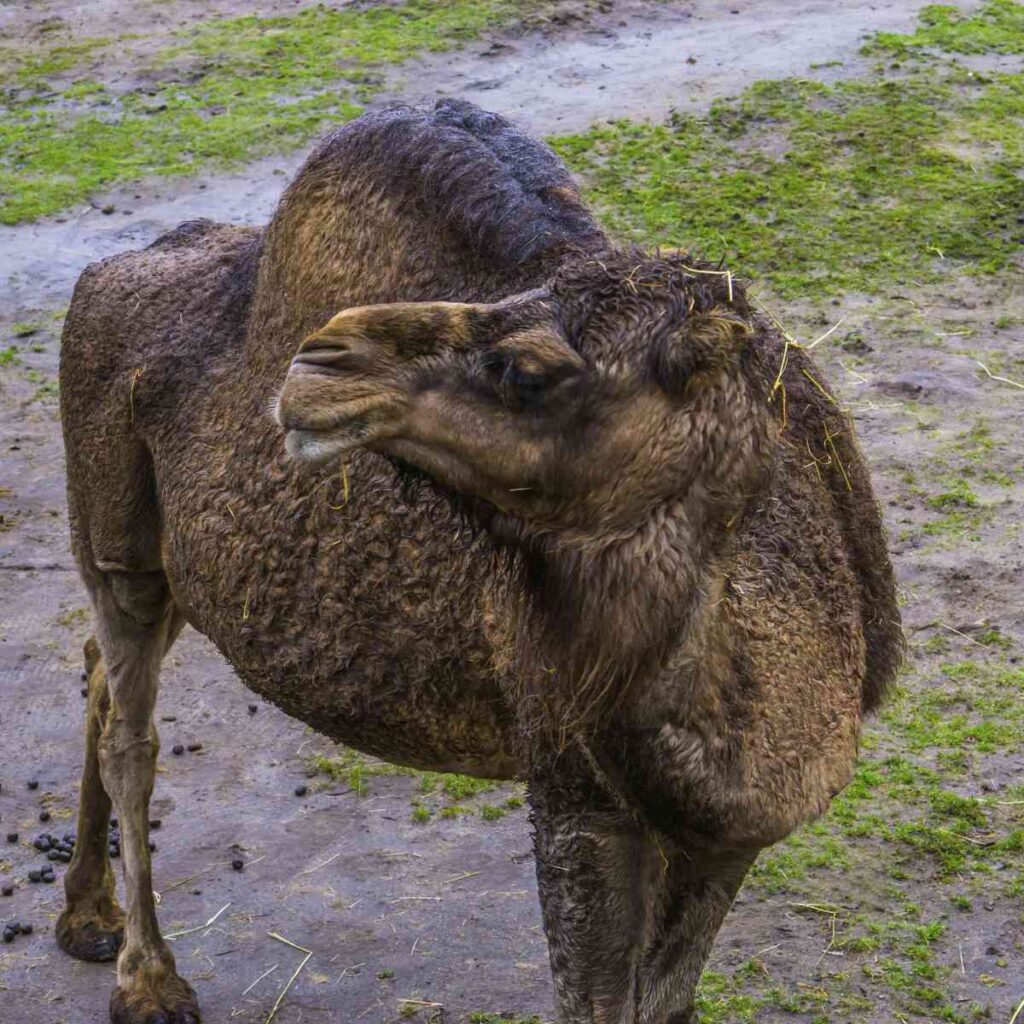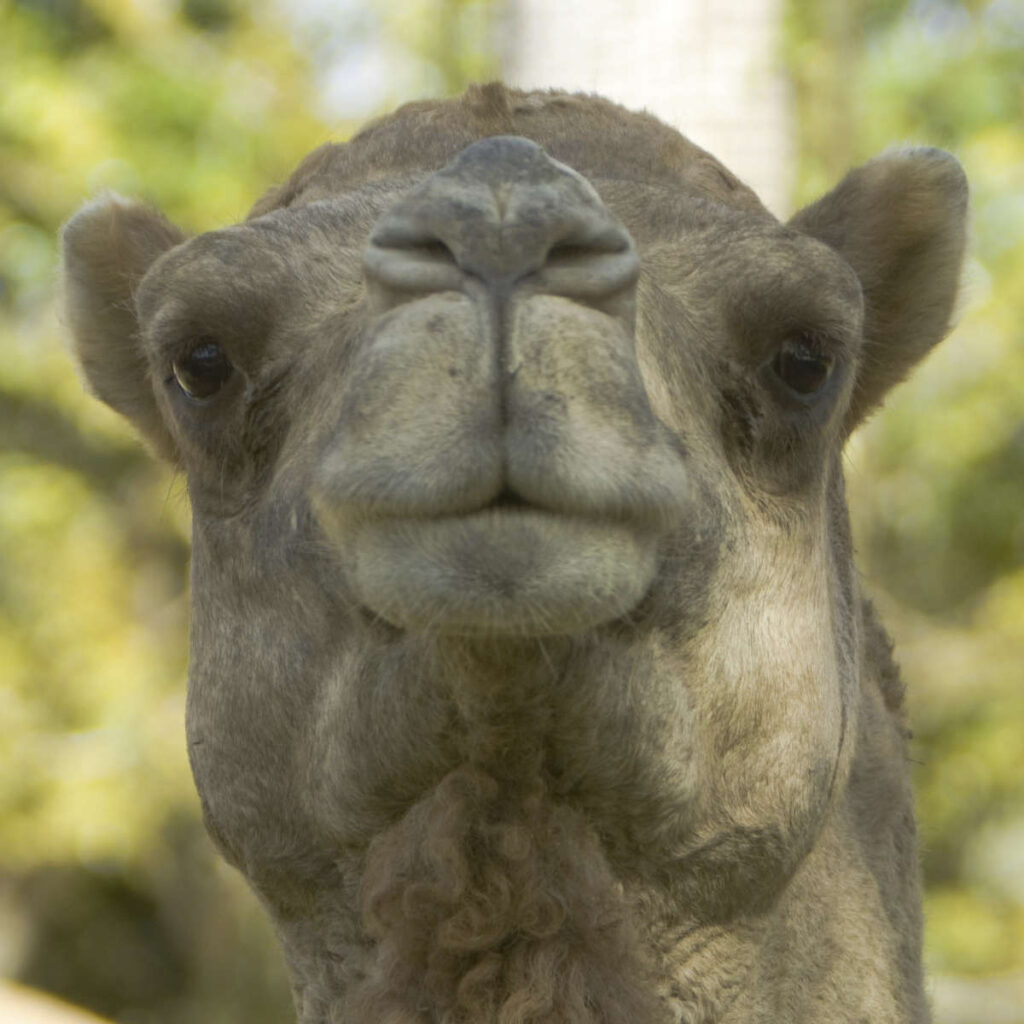Last Reviewed and Updated on June 10, 2022
Being one of the more fascinating members of the animal kingdom, camels have a lot of unique facts to offer. They are extremely specialized for living in harsh environments, and they push the limits of possibility in many areas.
Read through these fascinating facts about camels and get to know these magnificent animals even better.

1. There are two types of camels, and only 3 species of camels living
Dromedary camels have one hump and Bactrian camels have two humps. There are only 3 living species of camels – the Bactrian, the Dromedary, and the Wild Bactrian (critically endangered).
2. One hump beats two humps
There are far more one-humped camels out there (94%) than there are two-humped ones (6%).

3. Camel humps are fatty deposits
While many cartoons depict camel humps as being full of water and there certainly are camel myths about that, the hump is actually a fatty tissue. But the myth and cartoons aren’t completely wrong. One of the roles of the hump is to provide nutrients when food is scarce.
They also help them with regulating their body temperature. And good body temperature regulation prevents sweating, so while humps don’t store water, they help in not losing it.
4. They can withstand long periods without drinking water
They adapted in many ways to make this possible and dromedary camels can drink as little as once every 10 days which is extraordinary if you think about the weather conditions in their habitat.
5. Camels can last several months without food
If going without water for more than a week on a regular basis wasn’t impressive enough another fact about camels is they can go months without food. This is where their humps kick in.
6. When they drink, they can drink a lot
When you live in an environment that isn’t known for freely accessible water, you need to drink up when you can. Camels are able to drink large amounts of water in one sitting if they are really thirsty.
The average camel can drink up to a whopping 200L/53 gallon of water and it will do so in a matter of minutes. To get a better picture of this amount, a regular bathtub, when filled to full capacity, holds about 159 liters / 42 gallons of water. Talk about quenching your thirst.
7. Unlike other mammals which have round red blood cells, the camel has oval red blood cells
This camel fact is one of the most important ones as this adaptation is key when it comes to consuming huge amounts of water and dealing with dehydration.
When dehydrated, the blood becomes thicker and the oval blood cells are still able to circulate efficiently.
The camel is the only animal with oval red blood cells.
8. They can lose up to 30% of their body mass when dehydrated
This kind of loss would be the end of other animals, but camels are experts when it comes to surviving dehydration.
9. When they exhale air, water vapor gets trapped in their nostrils and is reabsorbed
This is yet another interesting fact about camels as it shows just how much their bodies adapted to conserving water. Nothing goes to waste, not even the water exhaled while breathing.
10. Camels have 3 sets of working eyelids
The third transparent eyelid is called a nictitating membrane and it helps with keeping the sand out of the eye. When it comes to sandstorms, camels need all the protection they can get and this transparent eyelid protects the eye and still allows the camels to see.
11. They have long lashes that protect their eyes from sand
Their eyelashes are really long and their job is to keep the sand away from the eyes.
12. Camels can completely close their nostrils
This camel fact is another in the series of adaptations these animals have for living in a harsh environment. They are able to close up their nostrils so the sand doesn’t get up their noses. This makes weathering through the sandstorms easier for them.

13. Their urine is thick as a syrup
This has to be one of the weirdest facts about camels but if you think about it, it makes perfect sense. Nothing screams loss of water more than urinating. But camels have that covered too, as their pee is more like syrup than running water, keeping the water loss at a minimum. Their stool is completely dried up as well.
14. The earliest known camel was the size of a rabbit
While the modern-day camels can grow quite tall, the earliest known camel (Protylopus) which lived 40 to 50 million years ago was the size of a rabbit.
This is also the smallest known species of camel that ever lived.
15. Most camels living today are domesticated
Camels were domesticated over 3000 years ago. They are mainly used for transport as they can carry heavy cargo in harsh desert conditions.
Only one species, the Wild Bactrian camel, can be seen in the wild and the species is endangered.
16. They have padded feet with two toes
They don’t have hooves, but their toes do have a hard nails on their ends (that do kind of look like hooves). Their feet spread as they touch the ground, preventing sinking in the sand.
Their thick soles protect them from the hot sand.
17. When they are threatened they can spit at you
Not just you, but anything that threatens them. To make things worse, they aren’t actually spitting at you but more of throwing up at you, as what flies your way are the contents of their stomach. Yikes! Best not to provoke a camel!
18. They can eat thorny vegetation
The harsh environment doesn’t often offer an abundance of food and more often than not the camels are left with dried-out and thorny vegetation. The camel has adapted to this as well.
Camels have really thick and flexible lips which allow them to easily graze vegetation and eat foods that most other animals can’t – they won’t have any issues dealing with thorny food – cacti being an excellent example.
19. Camels are born without a hump
A fun fact about camels is that they are actually born without a hump.
20. A female camel is called a cow and the male is called a bull
And the baby camel is called a calf. A group of camels is called a caravan. And this concludes our list of facts about camels.
